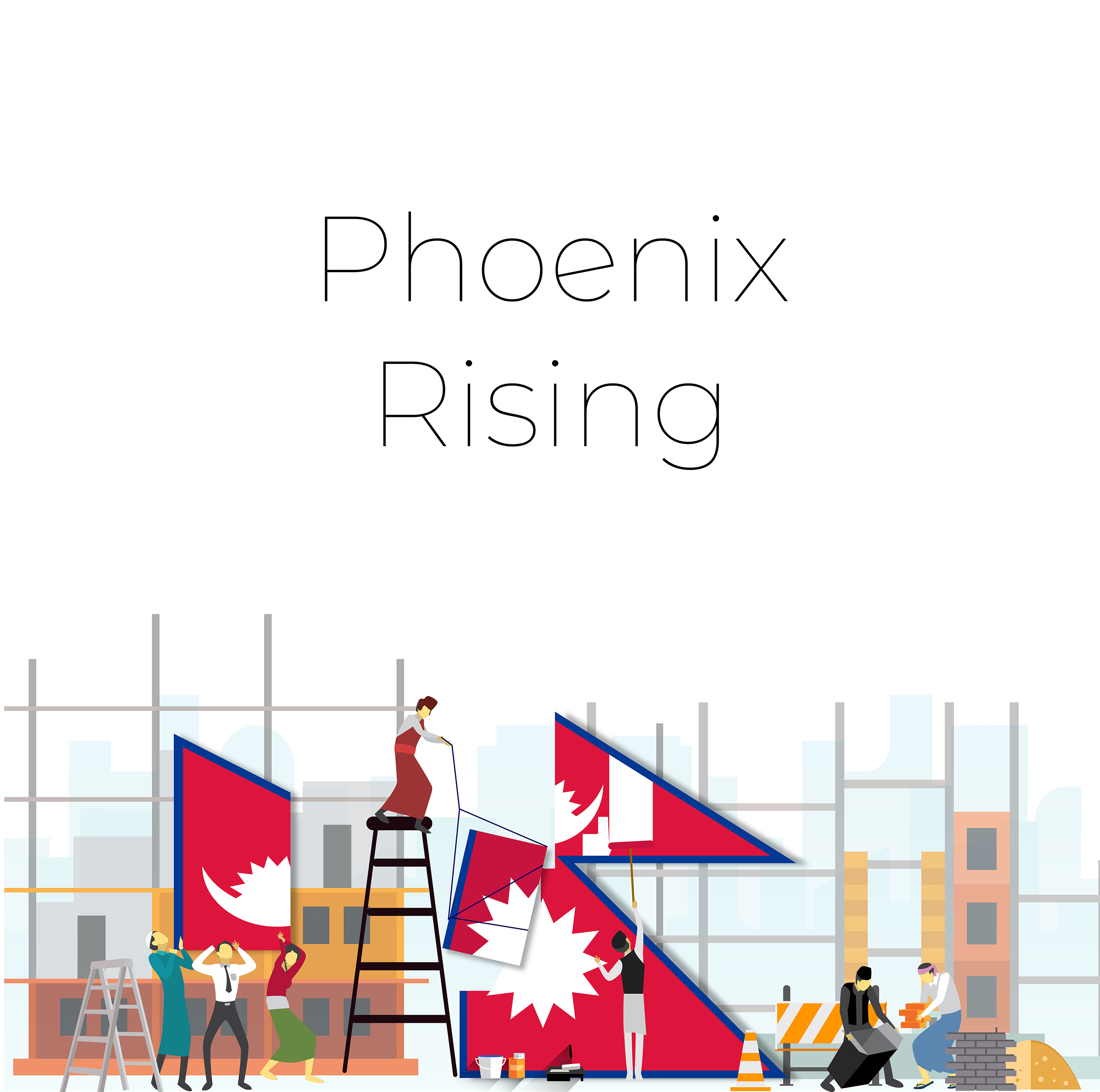Phoenix Rising
Recollections of the April 2015 Earthquake

The 2015 Gorkha earthquake was one of the worst natural disasters Nepal faced in its recorded history, but it also brought out the bet of the humanity.
On one hand it is eerie to see the clockwork-like reoccurrence of a major earthquake in Nepal every 70-80 years. This is a pattern that has been seen for last several centuries. On the other hand, it is reassuring to see that the people here have been able to rise up—much like the mythical bird Phoenix that lives for 500 years before it burns itself to death and then is born again from its own ashes, more resplendent than before—after each earthquake. The question now is: Are we again going to be able to do that after the Gorkha earthquake of 2015?
I doubt there is anyone who was in the earthquake affected area in Nepal on that day, who can forget the sunny Saturday morning of April 2015. It was almost like the calm before the storm. Then, just as the clock was about to strike noon, it happened. I still vividly remember the violent shake I felt inside my friend’s old traditional home in Kupondole, where I had gone for a visit, and the frantic efforts to get out the building during the earthquake--worried about my own safety, and worried about the safety of family members elsewhere.
The April 25, 2015 earthquake, known as the Gorkha earthquake, caused massive death and destruction in Nepal: 9,000 people were killed, and nearly 22,000 were injured in Nepal. It occurred at 11:56 Nepal Standard Time, with a magnitude of 7.8. Its epicenter was east of Gorkha District at Barpak, Gorkha. Geologists reported that it was the worst natural disaster to strike Nepal since the 1934 Nepal–Bihar earthquake. The situation wasn’t any better outside of Kathmandu. The earthquake triggered an avalanche on Mount Everest, killing 21. It also triggered another huge avalanche in the Langtang valley, where 250 people were reported missing.
Hundreds of thousands of Nepalese were made homeless with entire villages flattened, across many districts of the country. Centuries-old temples were destroyed at UNESCO World Heritage Sites in the Kathmandu Valley, including some at the Kathmandu Durbar Square, the Patan Durbar Square, the Bhaktapur Durbar Square, the Changu Narayan Temple, the Boudhanath stupa and the Swayambhunath Stupa. It was as if the collective spirits of gods and goddesses in those temples rose with the dust, and returned to the heavens above, unable to witness the pain and suffering down below.
Many survivors of the earthquake in the urban areas not only lost their family members, home, and possessions, but also their livelihoods. They continue to struggle to provide for their families and rebuild their livelihoods, houses, and communities. The situation with many farmers were no different. Many of them lost livestock, crops, tools, and irrigation systems they had put in their farms. More than half of the country’s schools were damaged and destroyed, so close to one million children were out of school for an extended period of time. Health centers and hospitals were damaged, as were water and sanitation systems.
The resultant social upheaval and poor living conditions made women, elderly, and children more vulnerable to abuse and exploitation. Child marriage and trafficking increased. While the number of dead, and the number of houses destroyed can be quantified, the pain suffered by the most vulnerable members of our society cannot be measured.
At personal level, it still brings chill in my spine and tears in my eyes remembering a dear and close family member who died protecting her son in Dhading during the earthquake.
Continued aftershocks that occurred frequently throughout Nepal at the intervals of 15–20 minutes—and continue to occur even now albeit not that frequently—are sad and cold reminders for us not the forget the tragedy, and the earthquake’s capacity to inflict evil and shake the foundation of what it means to be human. While the Gorkha earthquake shook the entire country and the people of Nepal, but it also brought out humanity at scales unimagined inside and outside of Nepal.
In the quakes’ immediate aftermath, relief and rescue works began swiftly, with local volunteers working hand-in-hand with the army and international aid workers. Although the Government of Nepal sped up its support for the reconstruction of damaged houses, community assets and resumed much of essential services soon after the earthquake, much more remains to be done to achieve a resilient sustainable recovery. However, over the past four years, many are feeling that the initial steam has gone out, and recovery effort has slowed to a crawl, especially in areas where the government is supposed to take the lead. Political bickering, a lack of accountability, bureaucracy, and poor management of funds have all hampered efforts to rebuild.
One thing the earthquake has made it clear that we as a society prosper and can rise up when we are together, especially in times of difficulties. Many well-wishers gave their time, money and some even risked their lives for the benefit of others. Humble as they are, they never sought limelight for the good work they did. They did their good work, and simply faded away. We are all better off for the work of these people.
And one another thing the earthquake brought to the fore is the need for preparedness. It was a clear message that things as they are will not be sufficient; we could have prevented much tragedy if we were only more prepared.
We are certain that we will rise up again from this devastation, much like Phoenix. One thing, however, is going to be different: a new phrase--“Build Back Better”--has entered the lexicon of the people. We will now come back stronger--and better--than before.


